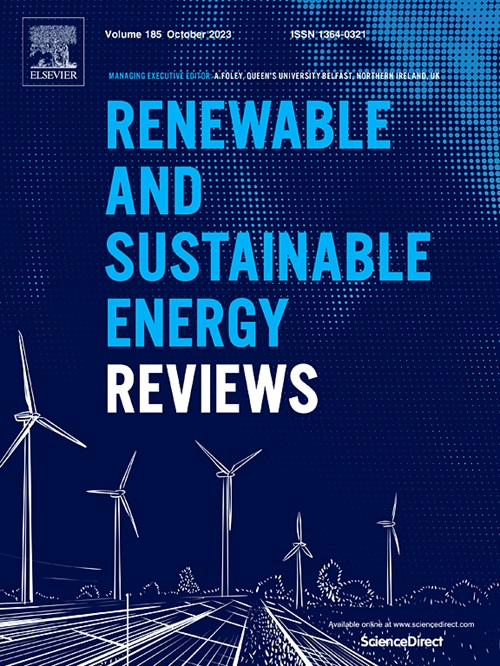Growth of residential solar energy in Brazil: A system dynamics approach
IF 16.3
1区 工程技术
Q1 ENERGY & FUELS
引用次数: 0
Abstract
The adoption of solar photovoltaic energy (PV) among households has grown noticeably in the past decade given technological advancements and decreases in installation costs. Despite positive developments, several barriers limit the technology from diffusing rapidly through society. Many methods have been used to investigate how these barriers affect diffusion across Brazil, but often these barriers are investigated in an isolated matter, when in fact, they are interconnected components comprising a wider system. The objective of this study is to determine how payback time fluctuates according to various policy scenarios, how this result affects adoption rates, and ultimately, solar PV diffusion in the Brazilian household sector. A system dynamics model (SDM) was developed to assess diffusion across each of the 27 Brazilian States. The SDM included a combination of economic, social, and environmental variables, such as payback time, peer effect, and carbon credit price. The SDM serves to simulate different policy scenarios and their impacts on PV uptake, energy production, payback time and carbon credit accumulation in Brazil from 2012 to 2030. The SDM serves to simulate different policy scenarios and 27 their impacts on PV uptake, energy production, payback time and carbon credit accumulation 28 in Brazil from 2012 to 2030.

求助全文
约1分钟内获得全文
求助全文
来源期刊

Renewable and Sustainable Energy Reviews
工程技术-能源与燃料
CiteScore
31.20
自引率
5.70%
发文量
1055
审稿时长
62 days
期刊介绍:
The mission of Renewable and Sustainable Energy Reviews is to disseminate the most compelling and pertinent critical insights in renewable and sustainable energy, fostering collaboration among the research community, private sector, and policy and decision makers. The journal aims to exchange challenges, solutions, innovative concepts, and technologies, contributing to sustainable development, the transition to a low-carbon future, and the attainment of emissions targets outlined by the United Nations Framework Convention on Climate Change.
Renewable and Sustainable Energy Reviews publishes a diverse range of content, including review papers, original research, case studies, and analyses of new technologies, all featuring a substantial review component such as critique, comparison, or analysis. Introducing a distinctive paper type, Expert Insights, the journal presents commissioned mini-reviews authored by field leaders, addressing topics of significant interest. Case studies undergo consideration only if they showcase the work's applicability to other regions or contribute valuable insights to the broader field of renewable and sustainable energy. Notably, a bibliographic or literature review lacking critical analysis is deemed unsuitable for publication.
 求助内容:
求助内容: 应助结果提醒方式:
应助结果提醒方式:


